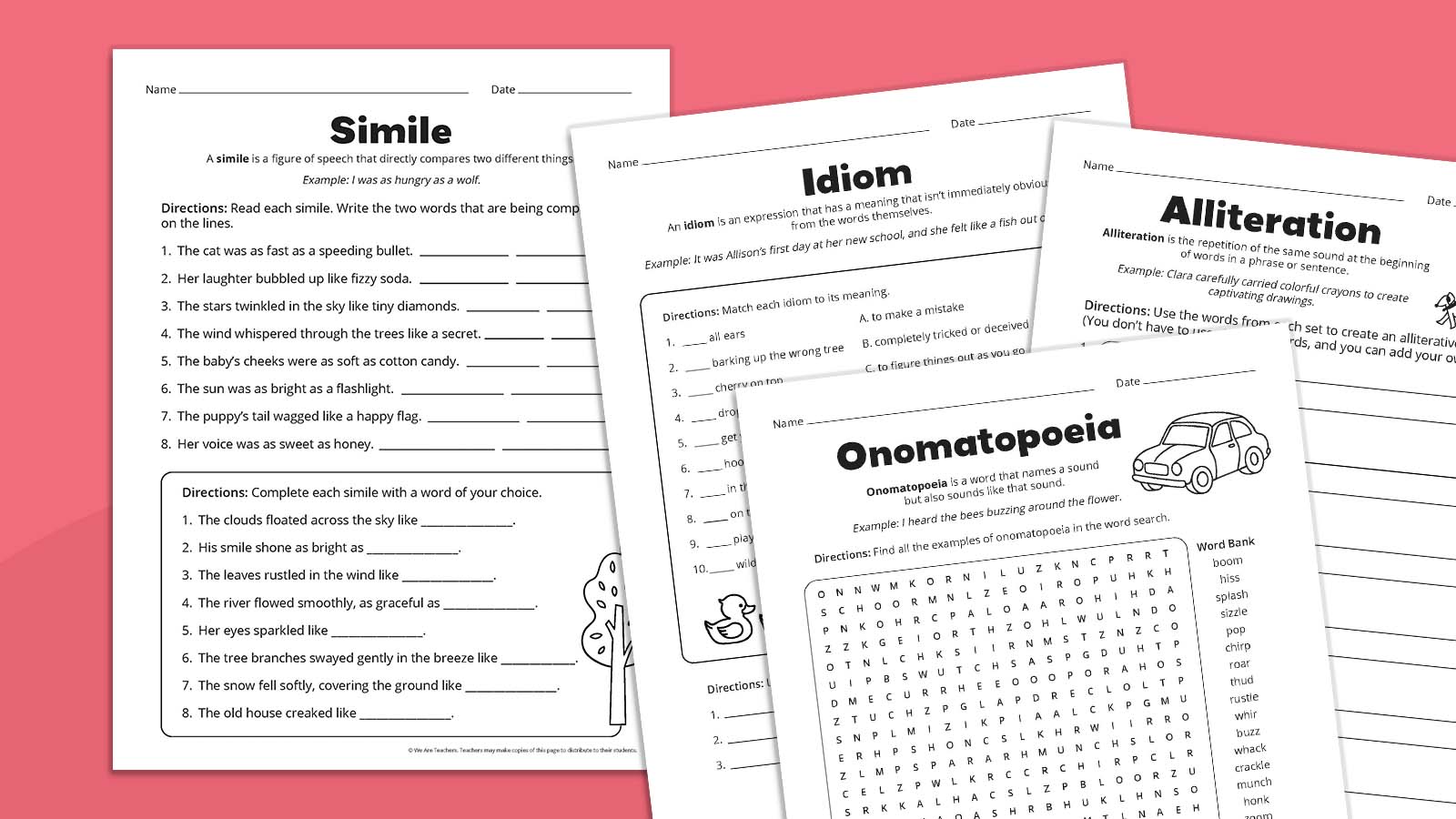Figurative language adds depth, imagery, and nuance to communication. It helps writers express themselves more vividly and effectively. Understanding and using figurative language requires students to think creatively and critically. If you’re teaching figurative language to your 3rd- to 5th-grade students, make sure you grab this bundle of figurative language worksheets. (We think it pairs great with our poetry worksheet bundle!). Here’s what our figurative language worksheets cover:
Simile
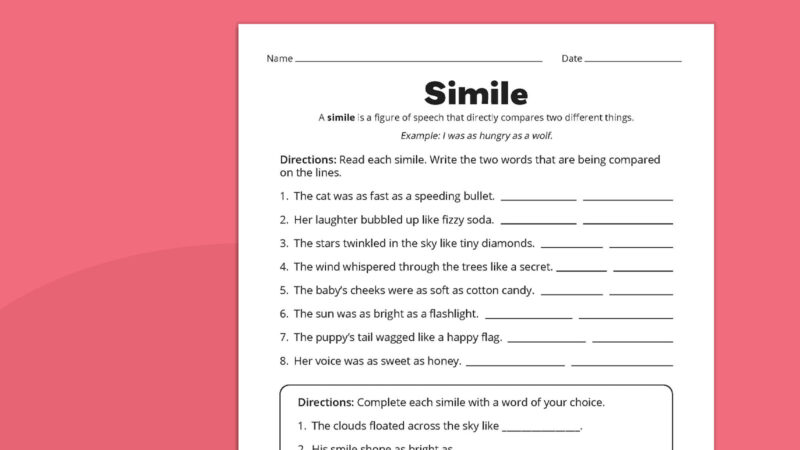
A simile is a figure of speech that directly compares two different things. On our worksheet, students will read similes and identify the two things being compared. They’ll also have the opportunity to complete some similes with words of their choosing.
Metaphor

A metaphor is a figure of speech in which two things that are normally unrelated are compared to each other. Students will use a word bank to complete metaphors and write three of their own.
Idiom

An idiom is an expression that has a meaning that isn’t immediately obvious from the words themselves. Students will match common idioms to their meanings and use three of them in a sentence.
Hyperbole
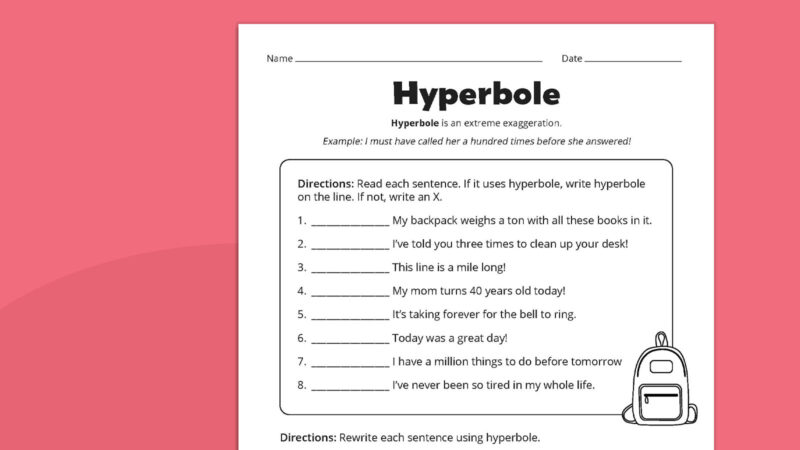
Hyperbole is an extreme exaggeration. Students will identify whether given sentences contain hyperbole or not and then rewrite several sentences to include hyperbole.
Personification

Personification is a type of figurative language that gives human traits to animals, plants, objects, and other non-human things. Students will identify the objects being personified in given sentences and write three sentences personifying given objects.
Alliteration
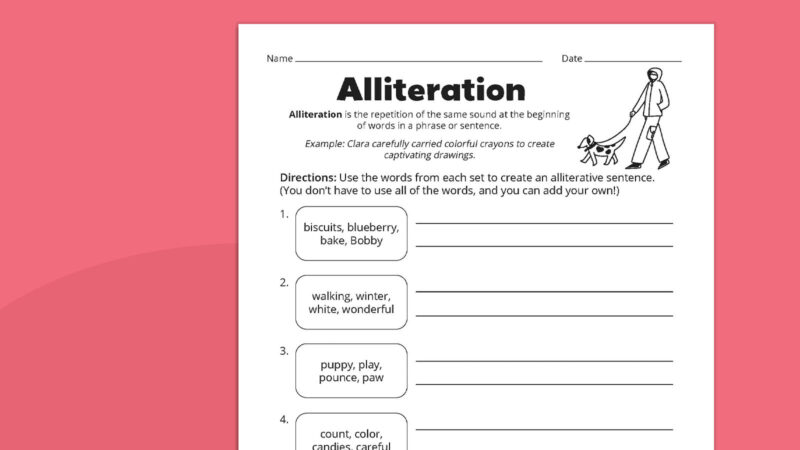
Alliteration is the repetition of the same sound at the beginning of words in a phrase or sentence. Students will take sets of words to write alliterative sentences.
Onomatopoeia
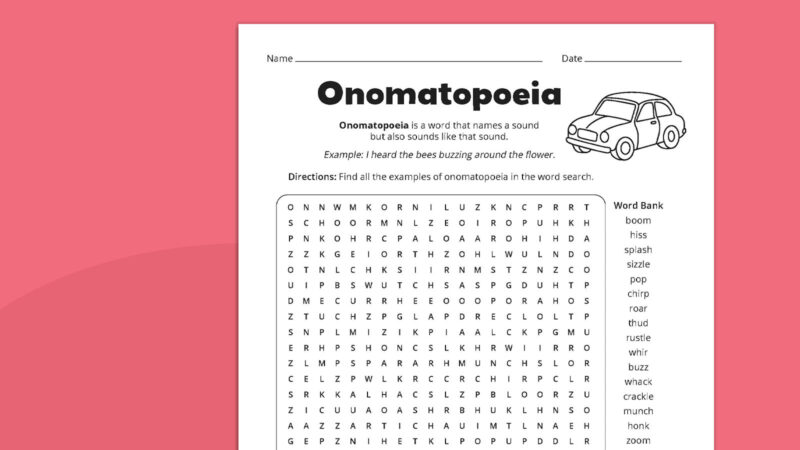
Onomatopoeia is a word that names a sound but also sounds like that sound. Students will find several examples of onomatopoeia in a word search and then use a handful of them in a sentence.
Finding Figurative Language
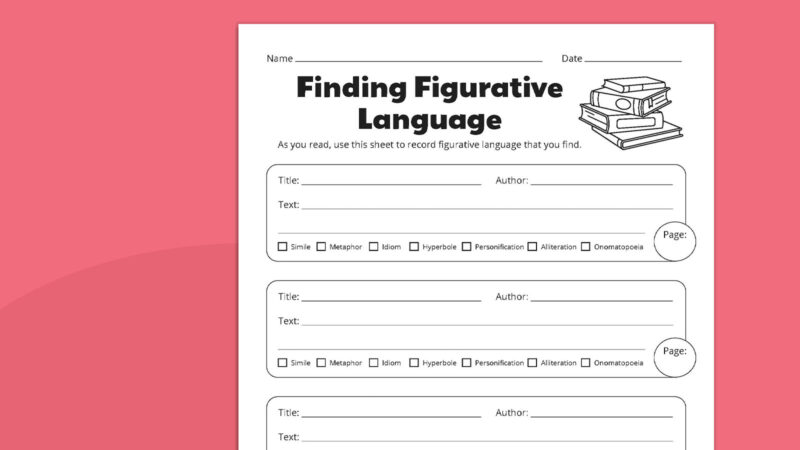
Finally, students will have the opportunity to put all their learning to use. On this record sheet, they can record instances of figurative language as they read. This worksheet includes spaces to write the title, author, example, and a checkbox for what kind of figurative language is demonstrated.
